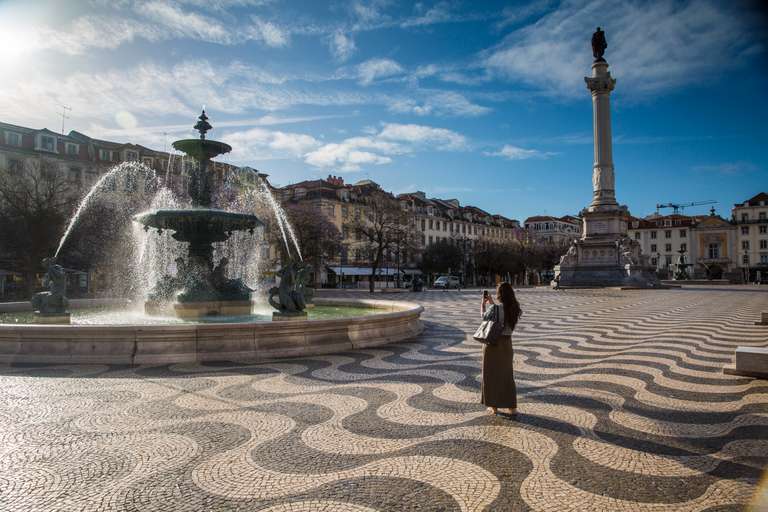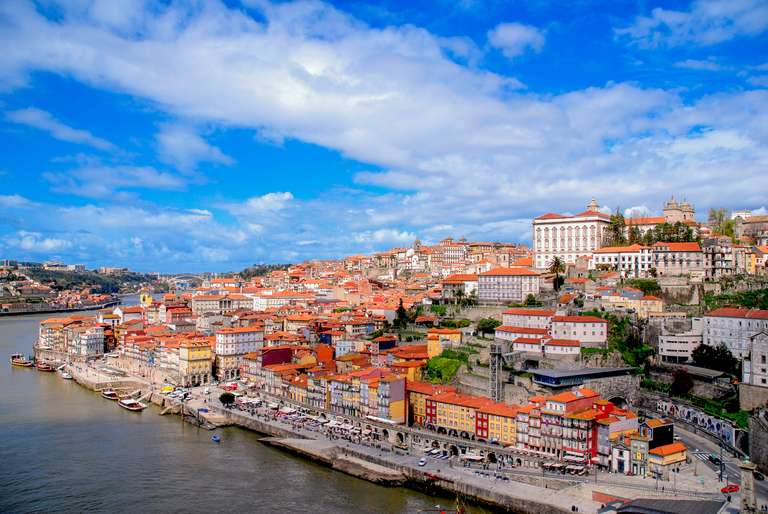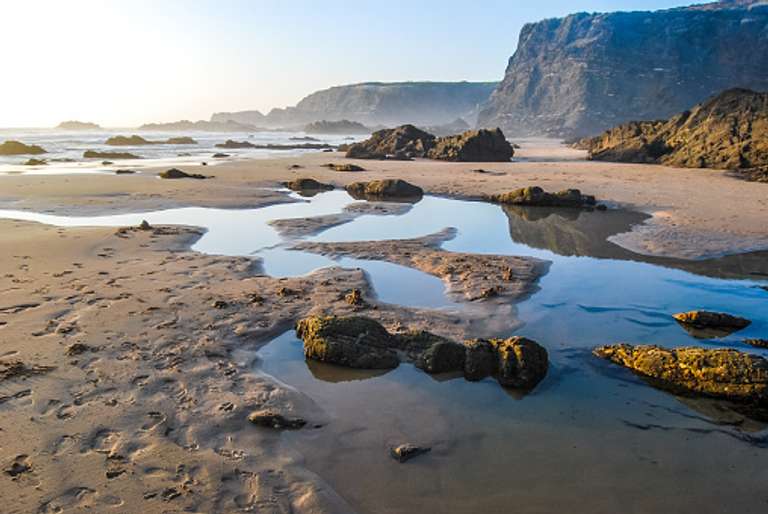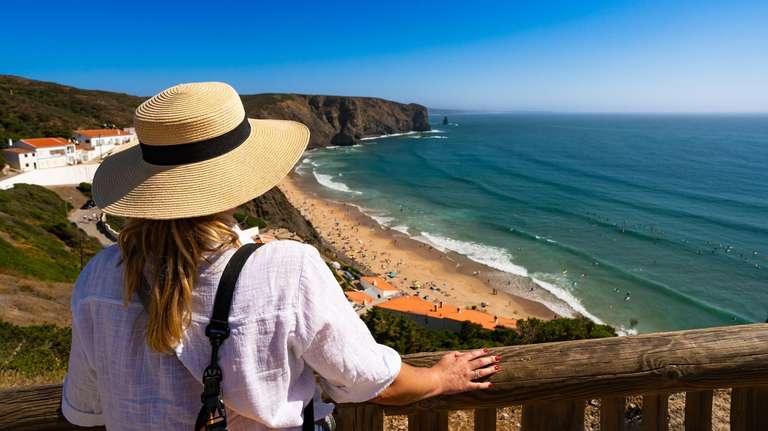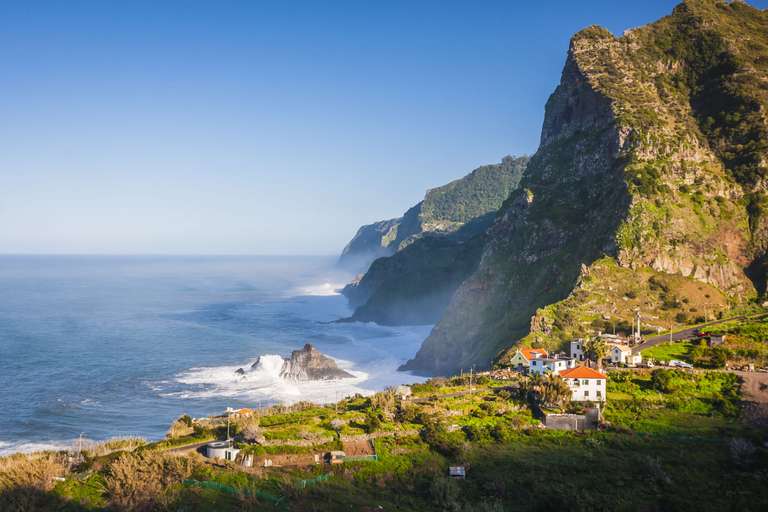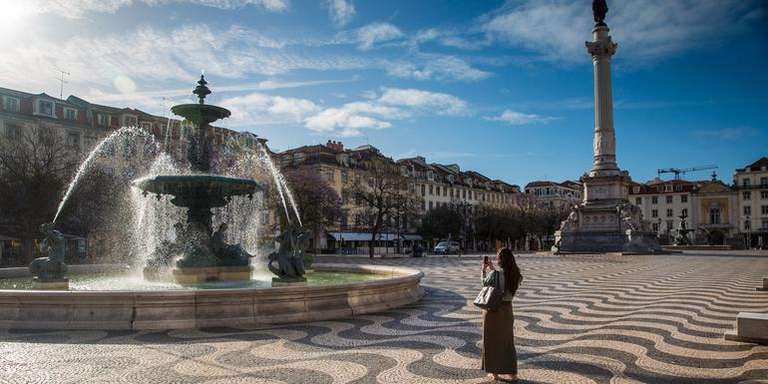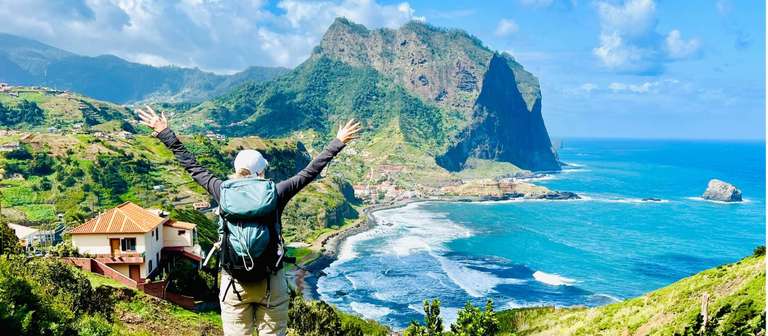The Azores in March: Spring Weather, Whale Migration and More

- Michelle K
- From
- Michelle K
- From
- Claire D.
- From
- Jessica F
- From
The Azores’ weather in March
Days warm up with highs averaging at 18°C (64°F) in the Azores during March, while evening temperatures hover around 13°C (55°F). The same can’t be said for the water temperatures, which remain chilly, sitting at around 17°C (63°F), but still swimmable on sunny days. Surfing and snorkeling are possible with a wetsuit. Occasional rain showers are still to be expected but are less frequent than the previous months and don’t last all day. Bottomline, March is a good month to visit the Azores considering the temperature, weather, and subsequent activities.
For an overview of weather conditions in the archipelago, check out our 12-month Azores weather guide.
Why visit the Azores in March?
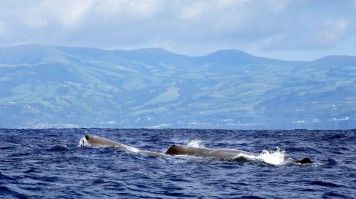

March falls outside of the Azores’ high season but still offers plenty of activities and festivals to keep you going, many at a discounted price. Below are some reasons that make traveling to the Azores in March worth it.
- Catch the great whale migration: March is one of the best times for whale-watching in the Azores. Species like the blue and fin whales migrate through the Atlantic in springtime and visitors can spot some of the largest animals in the world just miles from the Azores’s shores. In case of rocky seas, trips are rescheduled for another day.
- Springtime blooms: The rich biodiversity of the Azores comes alive in March, with many stunning endemic flowers like camellias and birds of paradise in bloom. The rains from previous months fuel cascading waterfalls and create lush, green landscapes. Without the summer crowds, the Azores in March turn into a remote, pristine sanctuary!
- The Romeiros of São Miguel: Every year in early March, a group of men known as the “Romeiros” take a week-long pilgrimage across São Miguel, visiting over 100 churches along the way. Though strict rules make it difficult for visitors to participate, all are welcome to watch as the Romeiros pass through the villages and listen as their songs echo across the island.
- Festivals: March brings two major festivals to the Azores: the Carnaval (Mardi Gras) and Tremor. In late February or early March, Carnaval is celebrated across the islands with colorful parades and lively parties. Tremor is an annual music and arts festival on São Miguel Island in March. Art installations fill the days, while the nights are for experimental concerts and clubs. The venues are the highlight, with performances alongside volcanic lakes and the Atlantic cliffside.
Where to go and what to do
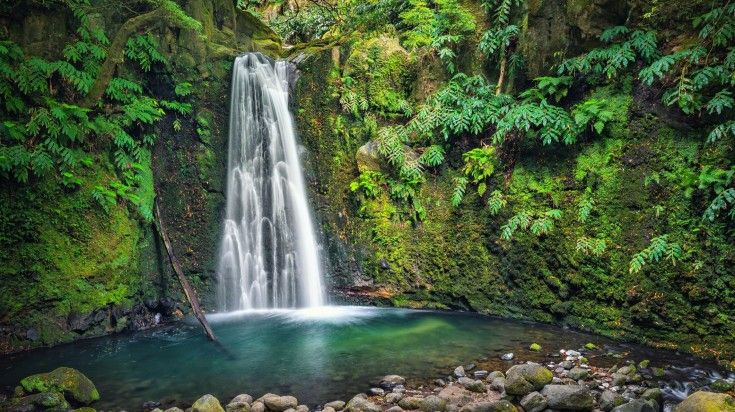
Given the number of activities and drier days São Miguel offers, travelers are better off basing themselves in its capital Ponta Delgada. Hike through lush forests, pass streams and waterfalls on the Faial da Terra trail and along the popular Sete Cidades loop. During lazy, rainy afternoons, learn about the Azores’s natural history at the Carlos Machado Museum or take a tour of Europe’s oldest (and now only) tea plantation, Gorreana Tea Factory. March is also perfect for exploring the unique landscapes of the Azores: Under the shelter of volcanic caves, find ancient lava tubes at Pico Island’s Gruta das Torres and São Miguel’s Gruta Do Carvão.
The highlight of visiting the islands in March is hands down whale-watching. Although whales are present in the Azores’ waters year-round, they are most populous during March. This is also the best time to watch or swim with dolphins. Join a whale-watching tour from any of the islands and you should have a fruitful experience, although check first and plan ahead— some businesses in outer islands such as Flores and Corvo close until summer. Some operators guarantee spottings and will offer a free tour another day if whales aren’t spotted.
The rain from previous months makes March perfect for water adventures such as canyoning and rappelling. If water adventure isn’t your cup of tea, there are plenty of hot springs to soak in (and the weather is just right for it too!). Head to Furnas—the valley of geothermal activity, spend a day at Caldeira Velha or try Ponta da Ferraria next to the Atlantic Ocean in São Miguel.
What to bring
Packing for all seasons is the way to go in the Azores. Bring a rain jacket for the occasional drizzle, and dress in layers to accommodate the ever-changing climate.
March marks the arrival of spring in the Azores, and though there may be a few extra days of rain, this transitory period is still a great one for visiting. The stunning landscapes of the islands are at their best and there are a plethora of activities and unique festivals with the added advantage of fewer crowds to interrupt the magic. If you need professional help planning the trip, reach out to our local travel experts for a customized Azores holiday.
Other related articles:
The Azores in February
The Azores in April
How Many Days to Spend in the Azores
How to Get to the Azores


